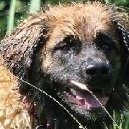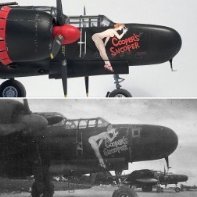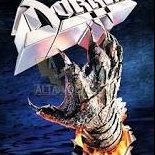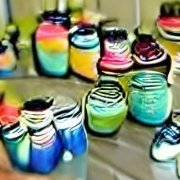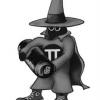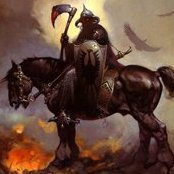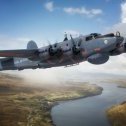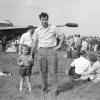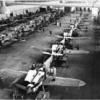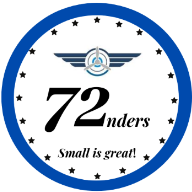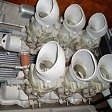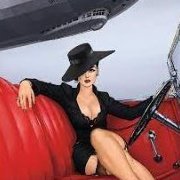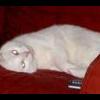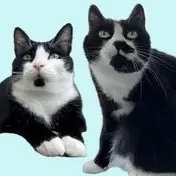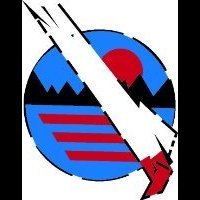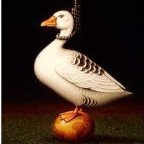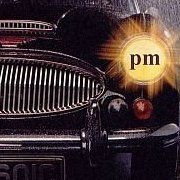Leaderboard
Popular Content
Showing content with the highest reputation on 07/07/22 in all areas
-
G'Day All Certainly not the easiest model, but Im glad she's now done and residing on my shelf! I've always liked the Tankbuster Hurricane ever since seeing the ancient Monogram kit built to a high standard during my early teens. The model was built pretty well out of the box, although I replaced the cannons with brass tubing. The fit wasn't tooooo bad, but you need to ensure that the casting block is completely removed from the resin wheelbay. Even then there was still some sanding and filling required. All markings were painted on using home made masks from a mate. Stencils were also painted using masks from 1 man Army. Paints were by SMS A fuller description of the build can be found by following the link in my signature block. Roll on the forthcoming Revell Hurricane IIb! Thanks for Looking Bruce26 points
-
Hello everyone … I present to you my first CF.100 Canuck airframe #18551 in the markings of 410 Squadron stationed at RCAF Station Uplands, Ontario circa 1957. This is a kit restoration of a previous build (not mine). I was able to finally secure a kit earlier this year and part of the deal was to restore this kit. Here is a link to the build thread if you're interested. https://www.britmodeller.com/forums/index.php?/topic/235104890-cf100-clunk-restoration/ My unbuilt kit has started in the Canadian Group build please visit and follow along if you would like. https://www.britmodeller.com/forums/index.php?/topic/235111843-mk4b-cf100-all-weather-fighter/ Please feel free to ask question's, post comments or add thoughts. Dennis22 points
-
I recently got into model building and have built a few of the airliners that I've flown, but was tempted into giving a warbird a go... I decided to go for the 1/32 Tamiya IXc Spit & boy was I glad I did, what an amazing kit! After the Revell/Zvezda airliners I've built, this is in a whole different league. Can't believe how well it all fits together and the amazing details, had some minor disasters through my inexperience. Such as the decals bubbling from super clear iii varnish, but managed to just about save them by sanding the decals back and painting the gaps with the airbrush. I added some after market decals, rocker covers, exhausts, cockpit door, wheels, gun barrels & the amazing Quinta Studio cockpit. I'm very happy with how it turned out for my first warbird, but really interested to hear any critique., especially on the weathering as its my first go18 points
-
And, no, I don't have an advanced copy of the soon to be released Airfix 1/24 Spit IXc. I do, however, have one on pre-order. Years ago, I converted the Airfix Mk.1a and thought you might be interested in seeing what the new kit will look like beside their Typhoon. The pilot figure is that offered by Imrie Risley17 points
-
I saw a couple of freshly painted Nigerian AF Jaguars in a hangar at Warton about 30 years ago and have always wanted to do a model of one. This is the Heller T2 kit with home made decals, I looked at using the Model Alliance decals but it was just as easy to draw and print my own. Thanks for looking. Steve15 points
-
ClearProp Models is to release a 1/72nd Mikoyan-Gurevich MiG-19 " Farmer" - ref. ? Source: https://www.modelforum.cz/viewtopic.php?f=1&t=95825&start=13485#p2509421 First render: a MiG-19PM "Farmer-E" Wrong scale... IMO 😎 V.P.14 points
-
Hi again This is my 1/144 Revell Boeing 767-300 that I have just completed as a second model of 2022. As you may know Revell kit goes together seamlessly with very little sanding and filling required. Kit however lack of some details. So I had some additions like pitot tubes, engine vortex generators and beacons which is not included kit. I think it looks better now. The decals are Martola and quality is top noch and it has extremely thin carrier film. Cabin windows and windshield decals are from Authentic Airliner decals. Paints used were Mr.Color C156 white for the fuselage, MRP Boeing Grey for the wings and stabilisers. Corogard section is Alclad Dark Aluminium. Metals are Mix of Alclad range. Model clear coated with 5 thin layer of GX-112 and after fully cured polished with Meguiars products. Thanks for looking.14 points
-
Completed as J-9552 in the livery of No. 2 Squadron (army co-operation), somewhere in southern England early in its carrier, most likely sometime in winter 1931/1932. Judging so by the rudder stripes, which are still in the pre-1930 order. However, all things considered, the plane was from the 1928 contract, it was stored for some time, and I do not think anyone in the service would have cared too much about repainting the stripes unless the rudder needed to be replaced. Therefore, probably the airplane could have worn the same markings anytime in its service carrier, i.e. from 12/1931 to 06/1933. The kit is quite a nice Phoenix vacform from the start of the 90´s, with white metal parts by Aeroclub. The main parts come from the kit, but many details were either scratchbuilt or taken from the spare part box. The build thread is here: Brush painted with an assortment of enamel paints, roundels by Xtradecal, serial numbers from the kit, stencils from my spare decals. No matter how hard I tried, the rudder serial number did not fully blend with. I will have to survive. Altogether very enjoyable old-fashioned job, though I will be glad to take a break from vacform modelling for a while. As usual with me, no rigging.14 points
-
Another of my WW2 1/72 scale fighter models for your pleasure! This is another of the newer Airfix kits, and the fit and detail is quite nice. All in all, it took me a couple week's worth of spare time, built straight from the box. It now sits next to my Spitfire and Mosquito. Finished with Tamiya acrylics and Abteilung oils. Enjoy!13 points
-
Howdy A while back, I was reading ( looking at the pictures ) in Osprey`s Tomahawk and Kittyhawk Aces book when I noticed something unusual about a picture of a P-40 on page 81....... The camouflage colours seemed to be reversed ie the dark colour was where the light colour should have been. ( Desert scheme ?? ) So after spending several hours on Google came up with nothing definite, so posted on BM to see if anyone else knew anything Luckily for me, Allan Willoughby and Robert Hagger, posted me some information and interesting photo`s of Kittyhawks in a Grey and Green scheme. ( thanks very much to you both ) So I thought I`d give it ago and managed to get hold of a Mauve 1/48 P-40M/Kittyhawk III kit. Did a bit of work to suggest a `K` version and some improvements to the kit along the way: filled the perforated plates behind the spinner, butchered the kit seat to look like a p-40 one and added the mounting frame from wire, seat belts, added the missing lower part of the instrument panel, corrected the scissor links on the U/C legs, brake pipes and added tie down loops,......... ......gun barrels from metal tube, fuel dump pipe and that little spikey thing they have midway down the underside the fuselage, anti collision light, pylon for drop tank and that little plate on the fin leading edge where the aerial wire attatches. Decals from Italeri kit, a Ventura sheet and the stash Apparently Geoff Fisken flew this aircraft on occasion instead of the Wairarapa Wildcat and gained 3 kills in it ( according to the book ) Hope you enjoy, thanks for looking Hope I haven`t bored you 🙂, cheers Russ13 points
-
Ciao, after long time I finish my old Panther Ausf A Tamiya; here some pictures. Stay safe Paolo12 points
-
All the bits and bobs are done. I still need to take photos for the RFI so I’ll still post up one last time to pop that in here and a few extra shots just for you lovely lot. Bits on for the South African moth. give that prop a flick and around she goes. ❤️ And the Navy one. I’m yet to decide what aeroplane is next. probs the Firefly as I get to do some 3D printing. Until then as I’m only doing one build at a time I’m popping over here to finish off my Silent Running build. I’ll pop some pics up here when I get the RFIs done. I need to do the moths and the little hind a. Too. ok over to the other side to update Dewey. 🤖❤️ Happy modelling folks. Johnny.12 points
-
I've been staring at this for a few years now. I even got the box onto the bench a couple of times in the past but then I lost my nerve and back into the stash it disappeared again. I'd always found the amount of resin pretty scary - that combined no locating tabs, pins, grooves, holes, etc etc. So now, here we are, and I'm determined to make a go of this. Yes. Really. I've done some research into how the kit builds – the WIP thread by @Navy Bird I found particularly helpful. Some pics then of what's in the box. Two sprues of styrene. I was grateful that the lower wing half is in one piece so there's no butt join to deal with - although not so lucky with the horizontal tail. There's no detail on the inside of the fuselage - that's all provided by resin bits. On the right of this sprue are options for the turret area - either with or blanked off. There's also smooth cowlings which are marked not for use with the bumpy versions supplied as resin parts instead. Transparencies look good and seem nice and thin. The upper fuselage is supplied as a transparency with the window areas to be masked off. Looks like there's a missing circular piece. This is some of the resin with parts for cockpit interior and engine. There are spare sets of cylinders with one set of eight for each engine being larger - I think it would be easy to fit the wrong ones. And more resin. The large parts are the cockpit side walls with the interior tubing showing above the sill (probably not the right word). The back to back triangle is the interior tubing for the roof. I'll have to be really really careful with all those. And more bits for the interior plus a few external - I can see a DF loop I think. Decals look good. I haven't decided on the scheme yet. My first idea was a non-starter as this is the 'late version' with the more upright windscreen and the plane I had in mind was an early with the noticeable sloping windscreen (Avro changed that because it leaked when it rained!). There's a small p.e. fret with seat belts, fronts for the propeller hubs (neat), instrument panel and some triangles - I guess I'll find out what those are later. Finally there's a piece of 'film' as part of the instrument panel sandwich. Special Hobby instructions. Huge amounts of detail and arrows pointing in vague directions. Thankfully I have some reference material to help make some sense of what I'm supposed to be doing. These Warpaint references are great and a very useful article from FlyPast on the restored warbird in NZ. Which has stuff like this. Now that interior image is really helpful. And finally, for this post, something next to the bench as an encouragement. That's it for now. I'm off to read the instructions a few times and then lie down. back soon Mark11 points
-
A nice quick and easy build, straight out of the box. Thanks for looking, Steve11 points
-
As I come close to the conclusion of my HMS Wren build over in the Maritime section, I'd like to drop a place marker for the next project. On the night of 10/11 November 1940 21 Fairey Swordfish Mk.I's launched from HMS Illustrious and Eagle in two waves on a six hour round-trip to attack the Regia Marina in its harbour at Taranto. The mission was the culmination of a highly coordinated operation by the Royal Navy involving six separate Forces and two convoys. The total RN units engaged was three carriers, a battle squadron of four vessels led by HMS Warspite, a destroyer squadron of 12 destroyers, plus another 33 vessels of varying types. The plan of attack was elegantly simple; two waves were sent an hour apart. Approaching their targets from the west, two Swordfish were tasked with dropping flares along the eastern side of the harbour creating backlighting to sillouhette the target capital ships at anchor in the Mar Grande. Each wave comprised both torpedo and bomb armed aircraft - those with torpedoes attacked the capital ships and those with bomb went after the cruisers and destroyers in the Mar Piccolo. The attack was a success, aside form the not inconsiderable damage caused, it had the additional effect of pinning the Italian Navy in its northern ports for the remainder of its involvement in the war. Two of the attacking Swordfish were lost, one of the crews was picked up and made POW, sadly the other perished when their Swordfish sustained a direct hit hit from shore-based AA fire. I am building the Tamiya 1/48 scale Swordfish Mk.I more or less out of the box for this project. I haven't decided which of the attacking aircraft I will mark mine up as, but I'm erring towards either L4M flown by Lt H. Swayne of 815 Squadron off HMS Illustrious or L5F flown by Lt. E. W. Clifford of 819 Squadron also off HMS Illustrious. For reasons I'll touch on later, both of these pilots had epic nights, even more so than their squadron-mates if that were possible. I'll likely begin the build in a week or so I expect. I know we have a lot of FAA experts on board, I look forward to my continuing eduction of all things FAA with this build. Cheers.11 points
-
This started life as the old Testors/Hawk Swift "K4". The 541 was the pre-production Swift and there are quite a few differences between it and the early Swifts. I had to shorten and re-shape the tip of the nose, move the cockpit back, move the intakes back, straighten out the plan view bulge and change the shape to be more like an Attacker, fill the gun ports, extend the jetpipe and re-shape the wing leading edges. Also I drew and printed my own decals. It's painted with Alclad Polished Aluminium. Thanks for looking. Steve11 points
-
The latest in my line of models I'm making of all the jets I've had the pleasure of flying. This one has a special place in my heart as I got my command on the 777. Used some after market Avia Decals & landing flaps by LACI. I made quite an obvious boo boo on this one, which I didn't notice until I took the pics somehow, my only excuse is I changed my mind on the reg half way through and decided to do the BAK. Which is the aircraft I flew for my first flight after finishing my command training. Any comments and critique very welcome, thanks for looking11 points
-
An opponent to be reckoned with against the innitial operations of the UN forces,very nice kit (Quinta Studios cockpit included edition),A-36m Light Gray tamiya mix of XF-23,XF-25 and XF-2...: Hope you like it and thanks for visiting!11 points
-
Here is more complete model. Still missing some details but it went quite okay Airfix called in for silver/black propeller, but I've used the Tea color. I've tried to glue the broken wheel covers as best as I could. It does not look that bad. Decals went smoothly too. And here is a side view I still miss antenna, pitot tube and weathering. And maybe a bomb. Whole model was painted using acrylic craft paints and an airbrush. No varnishes were used. I did not use any filler neither - it is the model as it is out of the box. Does it count as a "craft paints" challenge?11 points
-
While digging through my photo archives for information on a thread, I came upon a set of aerial photo's. While I was down there on 23 Sqn, from May to Sept 1988, I handed my Olympus OM-1 to one of the nav's I knew from Wildenrath to get some shots of the islands. The crew were from 92 Sqn and were pilot F/Lt Ollie Barrett and nav F/O Dave McBryde. Dave went on to appear in a couple of TV series that can be found on Youtube, 29 Sqn Top Guns and Combat Pilot. These are some of what he took. Finally one I took showing the lovely August weather. I think we were preparing to wash the aircraft (don't ask)! Rob.10 points
-
Surely one of the lesser known aircraft of the Luftwaffe, produced in little more than a dozen experimental units, in 1994 it was the subject of a Revell kit. The model at first glance looks pretty good, but on closer inspection it shows various defects, which, at least in part, I have tried to eliminate. The cockpit must be partially modified and more detailed. The engines-propellers complex also requires some attention, as well as the area of the wells of the landing gear, the landing gear itself, the wheels, which must be thickened, and the engine nacelles. Finally, the wings, which require some minor tweaking. Until next time! Hope you like it. Thanks for your attention. Giampiero Piva10 points
-
Cockpit out of the box:10 points
-
A nice simple fun build to take away the taste of my near destruction of my Sunderland. Primed with Tamiya Neutral Grey Painted with ColourCoats Internal Grey Green, Sky S Type, Extra Dark Sea Grey, RAF/FAA Yellow, Tamiya Flat Aluminium, Nato Black, Semi-Gloss Black and a selection of poca pens. Washed with Tamiya Brown Panel Liner, Flory Dark Dirt, Citadel Nuln Oil and Seraphim Sepia Oil filters Windsor and Newton White, Abteilung 502 Paynes Grey Finished with Windsor & Newton Satin Varnish. Aerial Uschi Van Der Rosten Fine Rigging. Thanks for looking, Cheers, Alistair8 points
-
To you all - @Giorgio N @RAGATIGER @e8n2 @Duncan B @Hook @Robert @reini @Lord Riot @Wez @Courageous @Hamster Volant @billn53 @Arie Vos @dukdalf @jean @72modeler @lufbery @TEMPESTMK5 @Ignacio @Shalako @keefr22 @Lightningboy2000 @Terry1954 @dov @Smudge @Neil Lambess @Chuck1945 @corsaircorp @heloman1 @Chrisj2003 @Navy Bird @bentwaters81tfw @Rob de Bie @Paul J @Corsairfoxfouruncle @Pete in a shed @Graham T @Stu @replicant @Pantherhawk27263 @Autle @Luke1199 @TheyJammedKenny! @stevehnz @Serkan Sen @F-32 - thanks for you support, praise and comments. They mean a lot to me and, as guidance, have steered me on the rocky path that this build has been. Despite the hiccups along the way, my errors and mistakes, my accidents, etc, she has worked out okay. I am pleased with her. On with the next MArtin8 points
-
Time for another overdue update. With the painting done it was time to give everything a couple of brush painted coats of Klear to get a nice glossy surface ready for the decals. A fair amount of time was then spent sourcing the various decals need for this aircraft with a mix being used from the kit sheet, a Furball sheet for F-100's (all the stencils and some national markings) and the markings for the ARDC and AFFTC came from a set by Hypersonic which has various badges from Edwards units. It took some time to decide which of the AFFTC badges to use as it has had several variations over the years but fortunately the sheet had the ones I wanted.. When the decals had dried it was time to think about weathering, for this I used very watered down Revell acrylic Anthracite and before it was fully dry I used a 3M micropad which is well worn to go over the pained areas which removed the excess and left paint in the recessed details. The end result does look a little more well used than in the pictures I posted of it earlier but lets just say it had a busy week sitting in the exhaust of the B-52 that was carrying the X-15 that it was filming. So enough of my waffle here are some pictures of how she looks at the minute; And a closer look at my discoloured bum which has had some more work done to it and is now more discoloured; Undercarriage to build up and fix in place, followed by the fuel tanks and we are very nearly ready for the gallery. Thanks for looking in and as usual all comments and criticisms are gratefully received. Craig. 🇺🇦8 points
-
the fools are letting me loose today lets see what paint and solvent does to stitches.8 points
-
Double whammy!!!! ❤️❤️❤️❤️❤️ I did a dry fit of the program cards and other accoutrements. Psst! I know they fitted. I trust the manufacturer. 🤓 Next up I drew out the numbers to attempt my very first painted on decal. (Actually that’s a lie) this will be my second. @giemme will be happy. 😉 Then traced onto masking tape. And away we go. And on the rear. Red for the grill. (I did white first to make sure it covered) And rubber for the big one. Masking off and not too bad over all. I did some extra chipping with a cocktail stick to keep everything looking worn. Then painted the last few panels before a gloss top coat. Just before bird I decided to do a wash. Bits first. The metals are coming out nice. Even the little claw. The vent with number looks about right. I added some grey Flory too. The main arm sheath. The legs. And of course, the main body. I actually like the look of that without knocking back. 🤔🤔 I’ll see what hours daylight brings. Well here’s where he stands as of tonight. Lots of post shading/ filters and assembly. Seems like I’m hitting the fun bit! 😍🤩 I’m enjoying this one at a time malarkey. Sorry @corsaircorp I know it’s your MO but it’s too much for me. More soon. Happy modelling your wonderful lot. Johnny8 points
-
Ciao, after the Panther A I started a new project...this: Here some pics just started: Stay safe Paolo7 points
-
Finally I’ve managed to haul this one through finishing school for your delectation. As you can see, she is a Republic RF-84F Thunderflash of the Elliniki Aeroporia (Greek Air Force). More specifically she is a RF-84F-15-RE, an early block number, serial numbered 51-11294. Credit: Public Domain The Greeks operated at least 36 of these machines, gained through US MDAP deliveries following services with other European or US operators, varying from the USAF through other air arms such as those of France, Germany, the Netherlands. This machine was from US stock and had seen service with the regular air force as well as the 154th Tactical Reconnaissance Squadron, Arkansas ANG, being delivered to Greece in 1958. Throughout her Greek career she was operated by the 348 Mira (or Moira) from Larissa Airbase. Finally, she succumbed to progress and was retired to the Larissa dump in the late 1980s or early 1990s. I wanted to build one of these as a memory jogger for two trips I made to Larissa in 1982 while these aircraft were still active. Also in the same year my mates and I saw 53-7682 fly in to Athens for maintenance. Here is the only photo I ever managed, taken from the flight deck of our 737-200: Edit: I found a photo of “11294” on the Larissa dump in July 2013 For a taste of how they looked in operation here is a short video: The build thread is here: I chose to build this machine simply because I had a good image of her (above). The model is built using the Sword kit which is a reasonable basis for getting an “okay”-looking ‘flash. It is, however, known that the kit is slight short in length – depending what reference source you have and believe – and requires a fair bit of fettling to get something that looks as it should. I am no expert but I have tried a close representation. For those out there who fancies building one of these kits I suggest the following as some of the modifications that you could/should undertake: 1. Use an Airfix nosewheel leg. This would need more detail too but it sits better than the kit parts. What is must have is the compression link ahead of the main strut. 2. Make up a tail skid from plastic rod. 3. Add more detail to the intakes. I used plastic sheet cut into the BL plate and the small vortex generators. 4. The tailplane should be pivoted. I used 0.5mm brass rod. 5. Drill out the wing gun ports 6. Add more detail to the coaming area 7. Add fillers to get the wing tanks to sit proud of the pylon, ensuring there is a small gap. Also add vent pipes. The tanks also need filler caps to the rear. 8. The canopy needs the four latches along the lower edges. I made these from plastic card. 9. The rear of the fin needs the nav light housing and two lights. It also needs the small rudder balance (is that what it is?) on either side. 10. The rudder and ailerons need trim tabs. Again, I used plastic card. 11. Consider the very noticeable putty around the canopy and rear glazing on these aircraft. I painted mine and masked them prior to adding the main masks. 12. If you are very particular, add a clear part for the dorsal nav light housing just ahead of the fin. I got too far and so opted to use silver decal. 13. Add new canopy struts 14. Add a mirror on the canopy 15. Add wingtip Nav lights In terms of what I used otherwise, it was the following: 1. Kit – Sword (SW72116) in 1/72 2. Decals – the Icarus set for F & RF-84Fs (72008) and the serial was printed by Arctic Decals following Giorgio’s drawing @Giorgio N. 3. Paint – Humbrol US SEA colours (two greens, tan, gray). These are numbers 28, 116, 117 and 118. Otherwise she had various greys, reds, blacks, metallics. All of these were Humbrol enamel. She is finish with Humbrol Satincote. I used a Montex mask. 4. Weathering – Flory washes (Dark Dirt and Sand), Tamiya Weathering Powders and a Prismacolor Silver pencil. After the washes I used a brush and Tamiya Weathering Powder - Sand all over to give her a bit more of a dusty look. 5. Aftermarket – none And here are a few shots of her: I hope you like her Martin7 points
-
The Messerschmitt Bf 109 continued to soldier on after the war in a number of places, including Eastern Europe, Czechoslovakia, Spain and Finland. Four of them were painted in high visibility markings for a race at an airshow. Since the spectators were in the center of the track and only saw one side of there planes, only the port side was painted. This is the superb Tamiya kit, riveted, with additional details. These include a Rob Taurus vac canopy with added details, riveting the entire airframe, tall tailwheel strut from a Fine Molds 109 G-10, brake lines, etc. I have to say, this one was a lot of fun. Not sure if there was ever a more garish 109, well maybe the Swiss one with the huge shark mouth (hint), but this one will stand out on the shelf. I had to resort to the iPhone 11 for these photos. The old digital camera is giving up the ghost. It will no longer focus properly and the shots lack definition. The phone camera has a level of vibrancy that was never there with my digital camera, but depth of field suffers. Does anyone have a camera recommendation? Anyway, on to the photos. I apologize; there are a lot of them. Got carried away with the phone.. IMG_7438 by Barry Numerick, on Flickr IMG_7436 by Barry Numerick, on Flickr IMG_7439 by Barry Numerick, on Flickr IMG_7440 by Barry Numerick, on Flickr IMG_7441 by Barry Numerick, on Flickr IMG_7443 by Barry Numerick, on Flickr IMG_7445 by Barry Numerick, on Flickr IMG_7444 by Barry Numerick, on Flickr IMG_7448 by Barry Numerick, on Flickr IMG_7447 by Barry Numerick, on Flickr7 points
-
Messerschmitt Me.262 HG.III (48A003) 1:48 Amusing Hobby via Albion Alloys The Me.262 was a ground-breaking aircraft, as it was the world’s first fully operational jet-powered fighter that went into action too late to make any real difference to the outcome of WWII thanks to Hitler’s meddling (Nice one Adolf!), insisting that it was made capable of performing as a fighter-bomber, thus delaying its entry into service by around a year – a crucial period in wartime. It was an amazing leap forward in technology, able to outpace the best piston-engined fighters by around 100mph, although it wasn’t without its problems, mainly because of the engines. Due to their isolation from the metallurgical technology and supplies from the majority of the free world, the Nazis were unable to make the kind of metals that were needed to stand up to the rigors and heat of burning jet fuel for more than a short period, which meant that the engines were effectively ruined within a few hundred hours of use. The Junkers Jumo 004 engines were the more advanced axial-flow type, but they were slow to spool up and down, which made the aircraft vulnerable to attack during take-off or landing, which resulted in a lot of losses once the Allies caught on. Add to that the weakness of the nose gear to this early tricycle design, and it was far from perfect. As with all technology, the next version is underway before the original has even reached completion, and the 262 was no exception. A streamlined canopy option was mooted initially, and that became known as the Hochgeschwindigkeit I or HG.I. Another variant was to have a greater sweep to the wings at 35o and closer-set engine nacelles, with a V-tail that turned out to be an aerodynamic faux pas. A further design had a greater sweep still at 45o and two of the more advanced Heinkel HeS 011 engine in semi-conformal nacelles buried in the wing root, but the war ended before that got further than the drawing board. Some of the DNA of the HG.III may well be found in subsequent designs in early US, British or Soviet jet aviation. The Kit Anyone that knows me will also know that I have a bit of a thing for Me.262s, so when I saw this one in the Rumourmonger area of the site, I was very happy and you can probably see my excited comment there if you care to have a look – feel free to roll your eyes. Amusing Hobby specialise in models of unusual types, whether it’s armour or aircraft, and this is their third venture into aviation, which makes me very happy they have. The kit arrives in a slim top-opening box, and inside are two large sprues in sand-coloured styrene, a clear sprue, decal sheet and the glossy instruction booklet with colour profiles on the rear for the markings options. Two sprues may seem a little light for a 1:48 jet fighter, but because of the design of the HG.III, the blended forward fuselage, nacelles and wings take up only two parts, with another two for the aft section of the fuselage. This cuts down on the part-count substantially, as does some nice moulding of the cockpit and the nose gear bay. Construction begins with the lower fuselage for a change, into which you add the long nose gear bay, after deciding whether the deeply hidden ejector-pin mark in the very depths of the bay is worth hiding. Speaking personally, I will be putting a tiny shim of plastic over the complete roof of the bay to make sure it’s never seen again. A central spine is inserted onto three turrets running from the nose gear bay to the aft of the main gear bays, forming the centreline of the latter. From the outside the gear leg, its retraction jack and captive door are added to the front, and nearer the rear a side-opening door with its own retractor is fixed, with a scrap diagram showing the correct orientation of the jack. The nose wheel is a two-part assembly with radial tread and a separate inner hub, just like those in the standard 262. The tapering intakes are made from top and bottom halves, and these are slipped inside a bulkhead with half-circular cut-outs, then the assembly is dropped into the lower fuselage on a number of receiver turrets. At the rear of the engine trunking, the rear fan and bullet fairings are slotted into place in the exhaust trunking in preparation for the centre section that will be visible through the main gear bay openings. The centre section has a pair of oddly-shaped sort-of figure-of-eight bulkheads that are spaced apart by two sets of trunking, which comprise a series of stepped cylinders. A pair of jacks are set diagonally between the two bulkheads before it is inserted into the lower fuselage ready for closure. The cockpit finally gets some attention, based upon a familiar cylindrical part that bears a close resemblance to the original 262 cockpit, into which the seat, control column and rudder pedals are mounted, with a fuse box on the right side and the main instrument panel lowered into a slot in the sidewalls with a clear gunsight on a rod mount passing through a notch in the top of the panel. Given the relatively low part-count for the cockpit, detail is good, with excellent raised and etched dials on the panel and side consoles. If you wanted to add more detail however, it’s entirely probable that existing Me.262 aftermarket will fit due to the similarities between it and the standard cockpit. The completed assembly is inserted into the upper fuselage, then the two halves are joined together, with a chunk of weight added to the space in the nose, although you aren’t given a value to help you work it out. The D/F loop and pitot probe are glued into position at this point, but I’ll be leaving them off until after painting. The canopy is sadly a single part, and fits into the recess over the cockpit, with a portion of the fuselage moulded into the front of the windscreen for ease of merging it with the rest of the fuselage. My example had a few small scratches on the surface, but they will probably disappear after a coat of Klear, and incidentally it’s the streamlined canopy, not the standard comparatively upright version. Underneath, the main gear legs are inserted into a pair of sockets moulded into the upper fuselage, and both have a two-part wheels with diamond tread fixed to the axles, and a half-circular bay door with jack, and a triangular rear bay door, with an antenna just behind the bays. A scrap diagram shows the correct angles from the front to assist you in placing them. The aft fuselage is split vertically, and has the elevators fixed to slots in the tail, then the completed assembly is mated with a stepped lip at the rear of the forward fuselage. I would leave the elevators off until after the fuselage is joined to ensure that they are set perfectly square with the wings, but that’s just me being cautious. I couldn’t resist nipping a few of the major parts off the sprues and taping them together after completing the review. Fit is excellent without glue, and the canopy slots into place perfectly, so probably won’t need any remedial work if you’re careful with the glue. The join between the front and aft fuselage is cleverly stepped for strength, and the elevators have one or two tabs to ensure the correct one is installed. It’s surprisingly large! Markings The HG.III was a paper project so it’s unlikely that anyone got as far as designing a camouflage scheme specifically for it, so the world is your lobster when it comes to markings. In sensible mode, extrapolating existing late war schemes would be a sensible move, but no-one can argue even if you painted it sky blue pink with purple spots, although they may question your sanity in private. There are two decal options included on the sheet, with profiles provided by AMMO, and using their colour codes to identify the shades. From the box you can build one of the following: Decals have never been the strongest part of Amusing Hobby’s offerings, but this sheet seems well-printed apart from a slight smudge on one of the E3 decals, with a matt carrier film cut close to the printed areas. The supplied Swastikas are in dog-leg halves, and they seem a little large to my untrained eye. The white ones with black outlines will need a little of the black outline cutting away if used, but the black with white outline markings correctly have a gap in the white outline where they will overlap. I’ll be using some of my Xtradecal Swastikas when I build mine for my own ease. Conclusion Hopefully, all those that would pooh-pooh this release because it “never existed” have given up reading by now, and I sometimes wonder how they cope when they’re watching fictional movies, Sci-Fi or other non-existent things. It’s an injection moulded Me.262 HG.III, which I thought we’d never see in my lifetime, so there’s a lot to be happy about. The detail that is provided is good, but if you’re a detail fiend you might hold off your build until someone has created detail sets for the landing gear bays, which could be seen as a little simplified to some, although little will be seen once it’s in the cabinet. External detail is excellent however, with rivets and raised details over the entire surface. Highly recommended. Available in the UK in all good model shops. Review sample courtesy of7 points
-
Decals and kit to be used7 points
-
Arma-Models from Orcostan is to release 1:72nd and 1/48th Kamov Ka-52 Alligator/"Hokum-B" kits Source: https://vk.com/wall-114983756_344743 Should replace the NeOmega offer https://www.neomega-resin.com/kamov-ka-52-alligator-148th-conversion-984-p.asp V.P.6 points
-
Hello all, This is my latest build, it's Tamiya's 1/72 A6M5 Zero. The fit of the kit was perfect, like all other Tamiya kits (in my experience). The model was painted with Ak real colors and Tamiya acrilycs, the yellow band on the leading edge and markings on the propeller were painted. I initially wanted to build Saburo Sakai's aircraft, inspired by his biography "Samurai!"; but I discovered that the Peddinghaus decals I had were wrong (dimensionally) and the other ones I had from an AJ Press Zero book were bad as well. So after some research I decided to do an aircraft from the 203 kokutai, at Omura airbase in Nagasaki, August 1945, from the Rising Decals sheet Zero pt.V, I decided to depict the aircraft with the tail number of it's first owner. The decals went on wonderfully. Some aftermarkets were used: Brengun Pe, a Yahu models instrument panel, master model 20mm canons and resin machine guns. The weathering was done with Tamiya enamel washes and powders, and a silver pencil for chipping effects. Hope you enjoy it! Next up is Arma hobby's F4F-4 Wildcat!6 points
-
That's a lot of bed hanging out in fresh air... Dean Lowe's was shortened 6", so I did roughly the same. The bed has a slight twist, but I hope that gluing it to the fender unit will take care of that. I used the kit wheels for mocking up, but I'm thinking American mags with M&H slicks.6 points
-
Now for something completely different (well, maybe not since it still involves VTOL !). This particular summer, Italy had been having a particularly brutal heatwave and the risk of forest fires was more acute than normal. I was actually walking back from work in Central Rome on this particular day and could detect a strong smell of smoke in the air. On this particular occasion it was one of the city parks that was ablaze and the Forestry Commission had to call upon reinforcements from the Civil Protection Department. I caught these two skillfully navigating the Tiber River (in between the many bridges that cross the river within the city environs) to scoop up water. You can see the proximity to the river bank and various hazards (trees, bridges etc) that provide testament to the skill of the pilots on this day.6 points
-
Hello everyone … Well I was able to finally get a start on this tonight. I built up the fuselage and have it finished. There was a tiny gap behind the rear seater’s position and a piece of plastic card fixed it. Next up I used a bit of plastic strip to create mounting tabs to help hold this together. The cockpit has its first coat if black, bit if the “Blackhole effect” here. Still need to add a bit of color to the bang seats later today or Friday. The biggest downfall on the kit is the droopy tail. Its a mold issue so bit of sanding and fiddling and it aligns better now. Though there will be a good bit of sanding and finishing around the mid-fuselage join as its a bit bigger behind the join vs the area ahead of. Please feel free to ask questions, post comments or add thoughts. Dennis6 points
-
It's D-Limonene and is a citrus oil. It's used in the food industry for something-or-other, but is also a good, slow solvent for styrene. Because it's slow, it's very effective for laminating larger sheets of plastic without warping, and there's a lot of time for positioning parts and clamping them. After the join is cured it's as strong as any other styrene solvent join. Tamiya make one, and I'm sure other companies do as well:6 points
-
When I worked in the hobby shops it wasn’t uncommon to have a couple of unfilled tubes of Testors cement in a case. I sometimes took great delight in getting a reaction from the modellers when I stuck a tube in my nostril and squeezed it flat. Wouldn’t have pulled that on the general public. but I got a lot of weird looks and then laughs, when I fessed up. Cheers Jeff6 points
-
I'm not a 100% sure, but it might be Mr Color that do a fruit flavoured glue, although I can't remember if it's lemon or orange. Why make it smell like something edible? Some buffoon is just bound to try drinking some6 points
-
Airfix Fairey Rotodyne with home made decals as I wanted to do a later version of the colour scheme than provided by the kit. The Fairey Ultralight is trying to steal the limelight.... One of the nose wheels has fallen off, but that's an easy fix! Thanks for looking and to the GB mods and all the support with my two builds. Steve6 points
-
Okay, finally made a start on the cockpit and rear seat with a few coats of interior green, its a lot more low-tech than what I'm used to in there lol. Just need to paint what I assume is some sort of heating/cooling duct for the interior and put the fuselage together. Dry fitted the interior and fuselage halves and it looks spot on so hopefully get it together tomorrow. Thanks for looking in!6 points
-
This was my entry into the recently finished M3/M4 Group build, which I enjoyed and as always have learnt a bit more. Managed to finish the Sherman and the figures in time, but not the base. Anyway, I have finished the base now, nothing special just a Lidl chopping board, Tamiya “stone paving” and some static grass and lawn moss. "This will cheer you up!" is referring to the Commander offering the grumpy Gunner a glug of wine. Thanks for looking, George5 points
-
Thanks to all of you for the words of support, these last few days. I think I'm finally out of the body-work doldrums. At least for now. Gaps have been filled, steps profiled and feathered, and panel lines rescribed. Notice also that I have stripped the white primer I had on here. I used Mission Models primer, but was not happy when Tamiya masking tape caused huge chunks of it to lift. And so here we are. Y'all must be getting sick of seeing the bottom of this model, but it's starting to come together now. And to demonstrate that I am in fact building both sides, here is the top. Its nearly time to start painting this beast.5 points
-
After a period of distraction/study and work duties/banal laziness I've managed to force myself and do something useful. The gap between the bulwark and the hull was finally filled with putty, and moreover - I've ordered a great-looking box, which allowed me to attached the ship to her base. This now makes the way opened to painting the hull, camo and the deck. Speaking of which, I now tend to choose the unpainted wood for a simple better view. As there still is no clear evidence on whether was the deck painted to the time of Pedestal Op., I believe no one will judge me for that. As a small bonus - when an endless circle of "apply the putty - peel the putty - witness the gap still existing - say 'sh*t' and repeat step 1" process almost made me mad, a little ship caught my eyesight. So by "distraction" in the beginning of the post I meant her - LCT(A) 2042, designated to Queen White sector of the Sword area. It was really hard for me to get info about its load (Centaurs and Sherman) and a couple of pictures - but hopefully it will be enough. There is a great benefit in working in the same scale. Firstly your built something huge like HMS Hood, then something smaller - HMS Warspite for example. Then you are holding HMS Calcutta in your hands, saying "That's something really small". But afterwards you work with the Tribal-class destroyer, V&W class, a minesweeper, LCT, Vosper torpedo-boat, and finally you put together all of these finished models of ships in the same scale of the same era... And that's when you truly realise how complex, multifunctional and diverse in scale and appearance Royal (but also every) Navy was. That's what I admire in shipmodelling. Thanks for your attention and sorry for too much lyrics 😅5 points
-
"They've got guns." "You want a third of the loot?" "Half!" Undercarriage, those leftover wheels, dusting pod and defuser Introducing the crew. and up onto those rims. Engine fitted, Spinner scratched from the front of a bomb. Walkways painted on.5 points
-
Right, this one can now go in the queue for a finishing coat of varnish. Pete5 points
-
A bit late posting this but my Father`s Day present from my son Shane. Simon.5 points
-
That's where I got: I have airbrushed the motor with Humbrol Enamel 11 silver. A had bought it many years ago and it was a bad batch. It is more a metallic grey than silver. The same with Hu 56 and Hu 191. So I use it especially for motors that shouldn't be in bright aluminium. Then I have airbrushed the frame, additional parts of the motor and all inner sides of the coachwork with Revell Enamel 99 aluminium. Some details of the motor are brush painted with Revell 90 silver for more detail. The exhaust pipes were brush painted with Revell Aqua 47 mouse grey. The motor got spark plugs and leads. The pipe for the leads got an extension bar to lengthen it to the fire wall. Then I have completed the motor with all additional parts and glued it into place. The same with fire wall and dashbord. It's a pity that finally most of the detailed frame will be hidden inside the body. . . . . . Next stop is airbrushing the body with blue.5 points
-
Thanks Jeff - the kit has a lot of detail included, not all of which I was skilled enough to use. I'm hoping that a successful dress rehearsal on the bridge railing bodes well for the main railings to come. Thanks Allan, it was a bit of a shame to cover those railings with the canvas/tissue. Ahh, I see. No, I'm not going to do anything with the portholes along those lines, though I will add some staining on the hull that will include some of the portholes. Actually, the portholes are so small that I bet you can't tell on which side I drilled them all out and on which I didn't. Thanks gents, much appreciated. More progress, but at this late stage of the build the process is not very easy to spot - aside from the obvious, that is... Working from the stern forwards I completed all the little bits and pieces on the stern and painted them. Next, I added an extension to the rear mast; compare the image below to how the mast was in the previous update. It's not totally accurate as that would have meant disassembling what I'd already done and I was quite sure it wouldn't have survived the procedure. Nonetheless, it's not bad... I added the pennant number "I88". HMS Wren wore "D88" as her pennant number until May 1940 when the Admiralty changed the pennant numbering system and allocated "I" to destroyers and gave "D" the larger ships. In order to represent this late change (compared to when she is modelled, a couple of months later) I painted a rectangle of a slightly different shade of grey to the rest of the hull where the "D" would have been overpainted and then applied the decals for "I88". It's barely perceptible in the photos above which is fine, too stark a difference would have looked odd. I also completed the foredeck with the actors and chains as well as the little bits and pieces for bollards. A better view of that here; I'm going to have to fix that silvering on the bow decal... I might even remove the decal altogether as I cannot see much evidence of these markings on any contemporary photos. Lastly, I did a bit of preliminary weathering. Again, not terribly visible here in these pics but I did some shading on the decks with a very thinned dark wash sprayed with my airbrush. Mostly I was going for subtle variations of tone rather than actual grime - in this scale I don't think that - or any of the 1/48 scale weathering techniques I'm used to using for that matter - works very well. I did the same on the hull. Again, it's barely perceptible but much more and it tends to caricature in this scale. Some sense of the deck staining can be gleaned from this photo... Since taking these photos I have completed and added the foremast. With that done, there's only two things left to glue on this model, the railings and the rigging and antenna wires (and the life boats which are painted and ready to go on). Both of these tasks fill me with dread, but I am encouraged with my success on the bridge railing and think I can get the deck railings on well enough if I remain patient and work slowly. I've ordered some generic railing to add to the gun deck as it wasn't included in the kit but it's quite prominent in the contemporary photos. It should arrive early next week and will likely be the last thing that needs to be done to complete the model. The rigging and antenna wires are something altogether different. The masts are very weak and may well bend under even the minuscule tension of the AK elastic wire I'm going to use. I also don't have a rigging diagram, and haven't be able to find one so far. I can make a representation, but I'd rather try and get it right. What's scary is the number of wires needed, and their complexity. Again, patient work should see me right and I'm probably worrying over nothing. That'll do for now, the next update should be one that includes completed railings. Cheers.5 points
This leaderboard is set to London/GMT+01:00

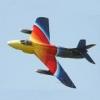



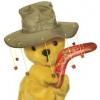
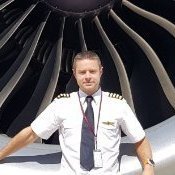

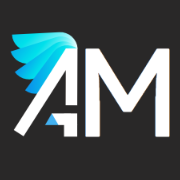
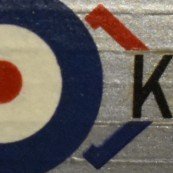
.thumb.jpg.d17ff607fc7e89ed057e63fcb6f2a888.jpg)
